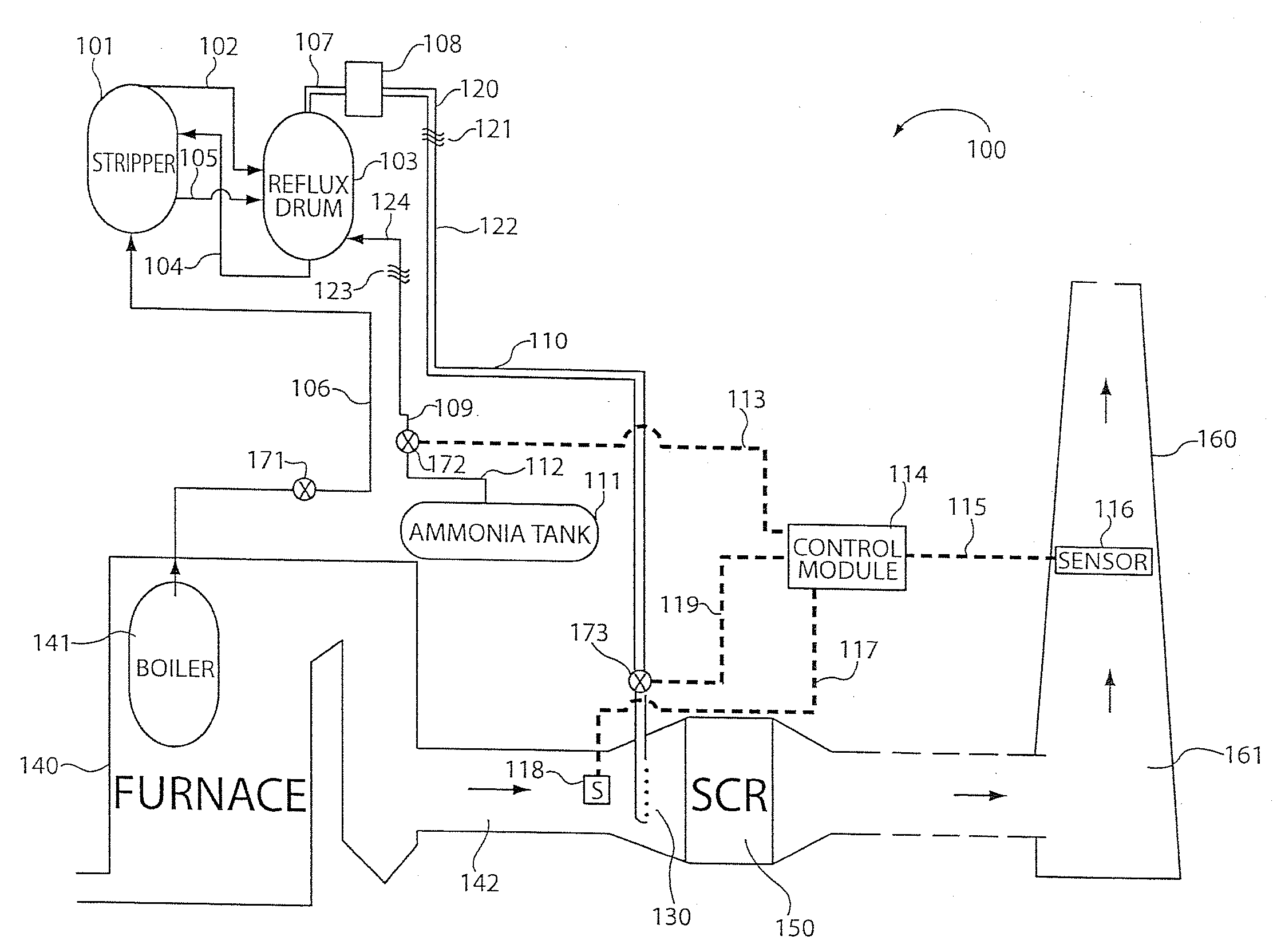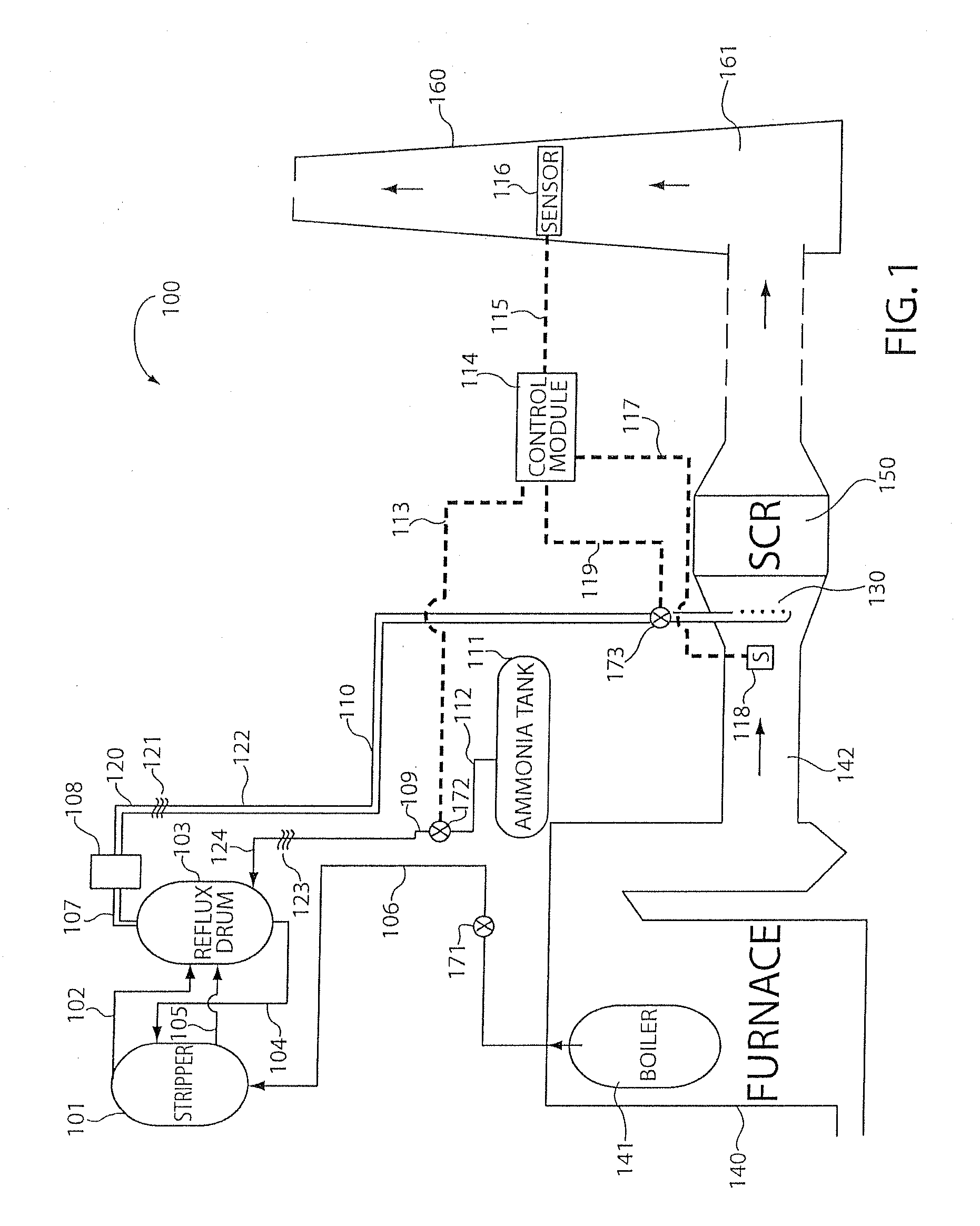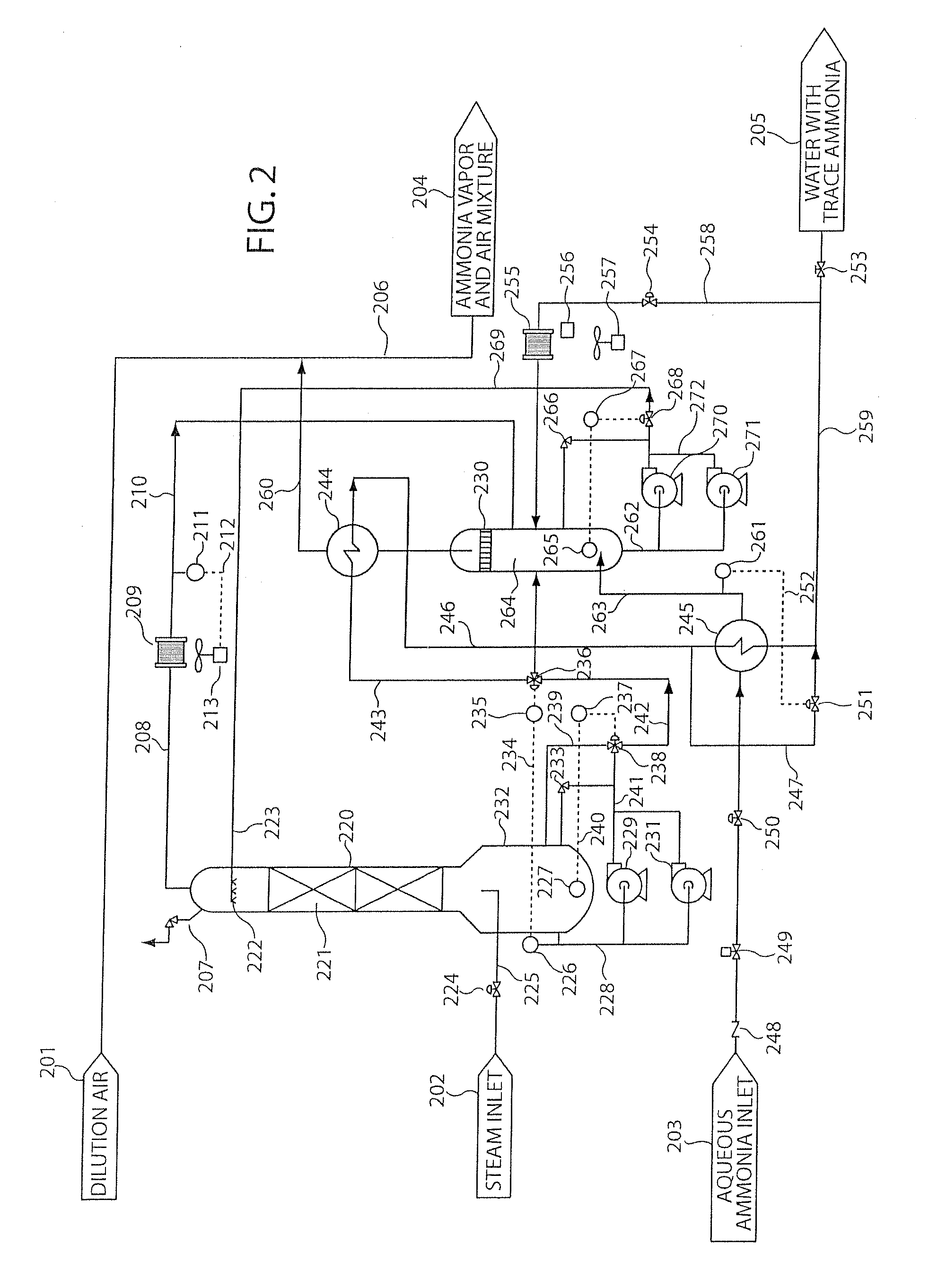SEPARATION OF AQUEOUS AMMONIA COMPONENTS FOR NOx REDUCTION
a technology of ammonia and nox, which is applied in the direction of separation processes, liquid degasification, evaporation, etc., can solve the problems of ammonia contamination of the steam system, the need for maintenance of the electric or steam coil, and the long time required in the hot region, so as to achieve energy efficiency and generate steam more economically.
- Summary
- Abstract
- Description
- Claims
- Application Information
AI Technical Summary
Benefits of technology
Problems solved by technology
Method used
Image
Examples
Embodiment Construction
[0023]The methods and apparatus of the present invention for vaporizing ammonia and injecting the vapor into a flue gas stream can be used with a wide range of furnace environments. For example, the invention can be used with power plants, refineries, or other instances of the use of turbine engines, heaters, steam boilers, etc. The invention removes substantially all water from vaporized ammonia for injection into flue gas. This reduced water content makes it easier to vaporize the ammonia (less heat is required than would be required to vaporize water), and the lower water content in the ammonia vapor reduces contamination and sedimentary buildups in the flue and associated equipment. Also, the liquid solution formed as a result of the inventive process is substantially free of ammonia, allowing it to be used as ordinary water in other parts of the plant, or for other purposes, and reducing the expense of treating and disposing of water with an otherwise higher concentration of am...
PUM
| Property | Measurement | Unit |
|---|---|---|
| heat | aaaaa | aaaaa |
| concentration | aaaaa | aaaaa |
| mass | aaaaa | aaaaa |
Abstract
Description
Claims
Application Information
 Login to View More
Login to View More - R&D
- Intellectual Property
- Life Sciences
- Materials
- Tech Scout
- Unparalleled Data Quality
- Higher Quality Content
- 60% Fewer Hallucinations
Browse by: Latest US Patents, China's latest patents, Technical Efficacy Thesaurus, Application Domain, Technology Topic, Popular Technical Reports.
© 2025 PatSnap. All rights reserved.Legal|Privacy policy|Modern Slavery Act Transparency Statement|Sitemap|About US| Contact US: help@patsnap.com



